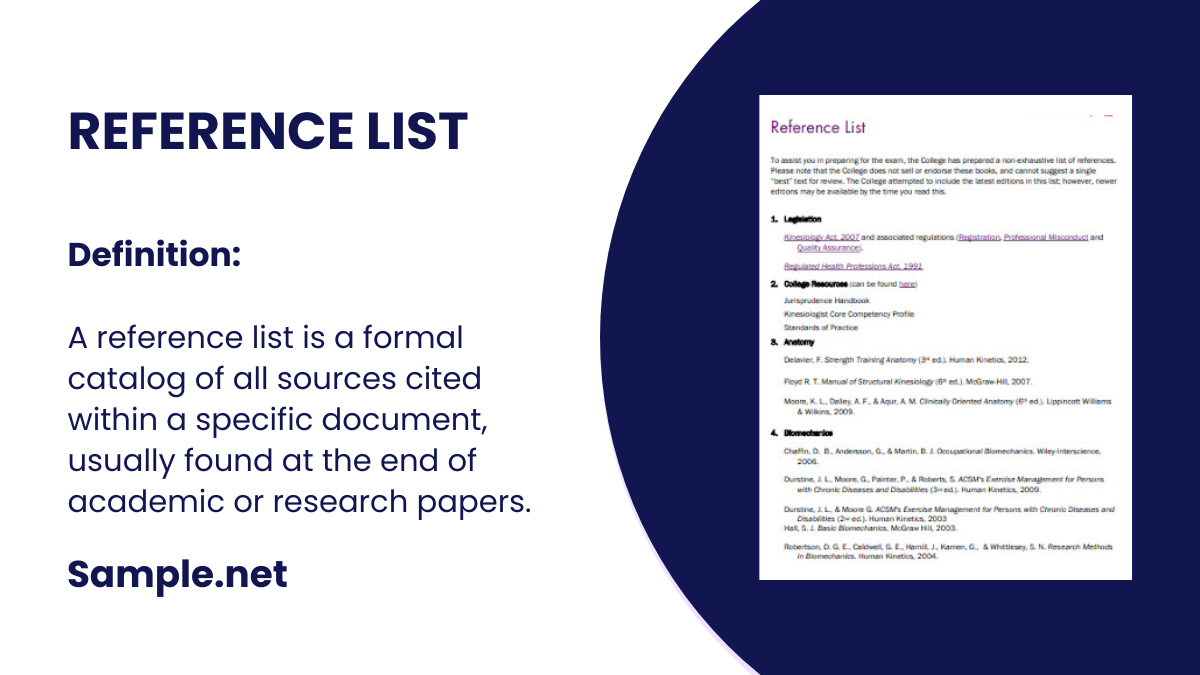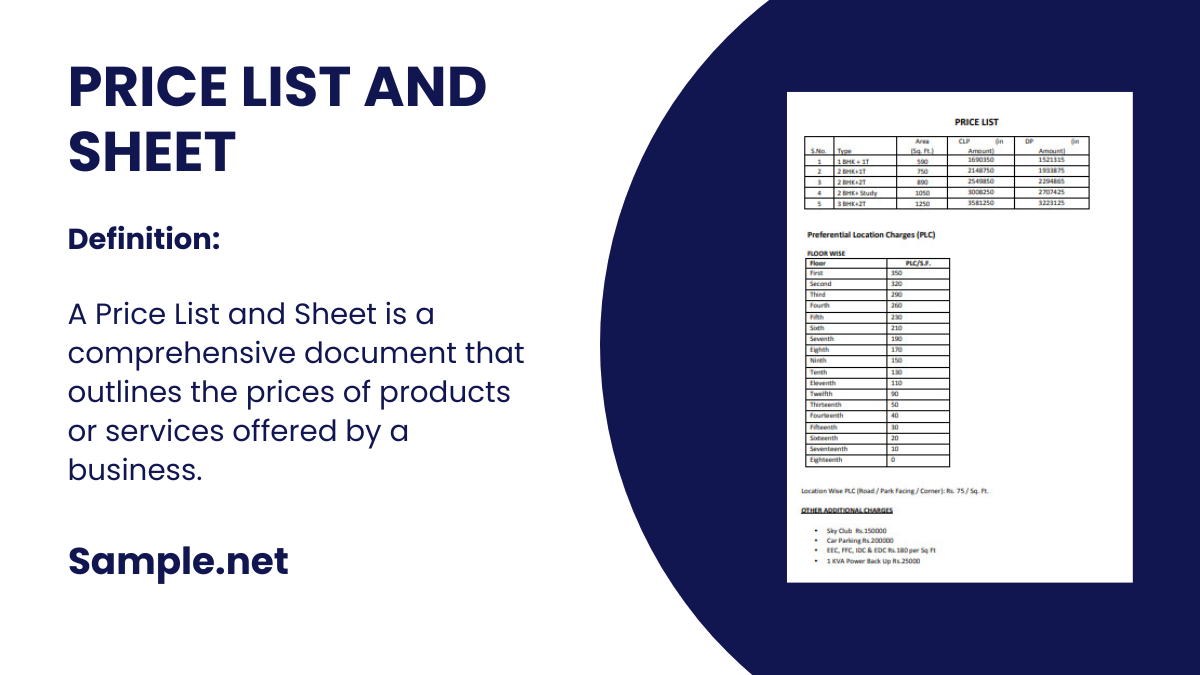A reference list is a comprehensive collection of all the sources cited within a document, report, or academic paper. It serves as an essential document for giving credit to…
continue reading
20+ SAMPLE Punch List
-

Punch List Template
download now -
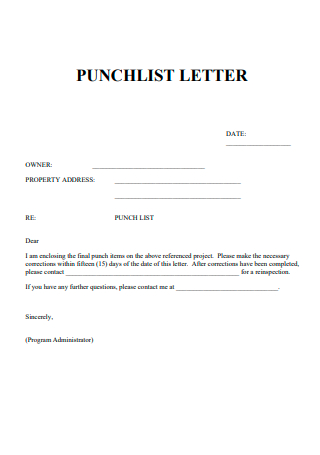
Punch List Letter
download now -
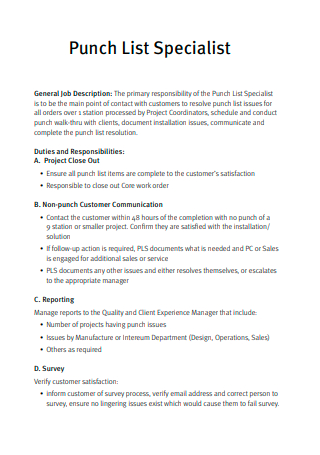
Punch List Specialist
download now -

Punch List in PDF
download now -

Standard Punch List
download now -
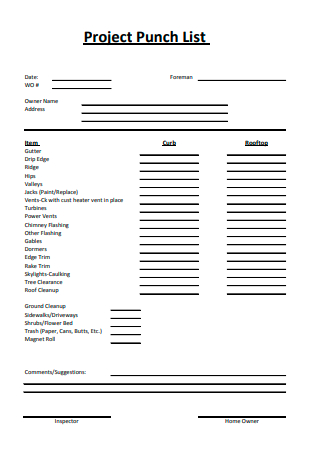
Project Punch List
download now -
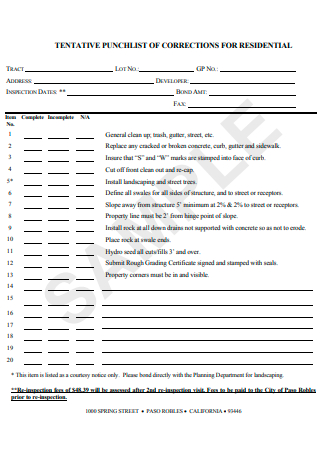
Sample Punch List
download now -

Formal Punch List
download now -

Exterior Punch List
download now -
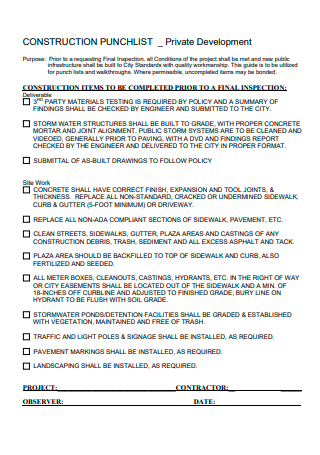
Construction Punch List
download now -
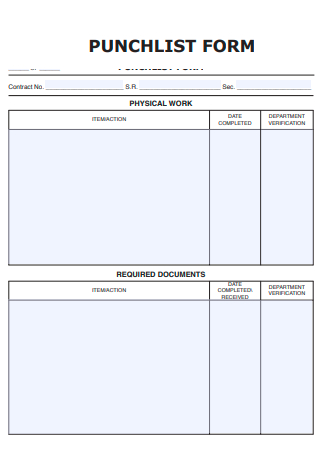
Punch List Form
download now -
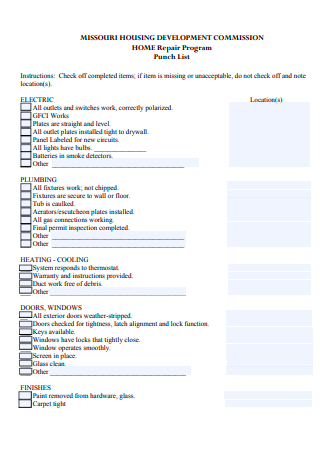
Home Repair Program Punch Lis
download now -
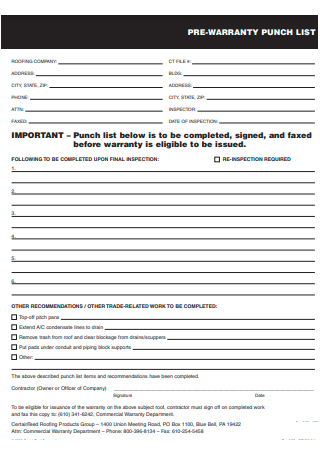
Pre-Warranty Punch List
download now -
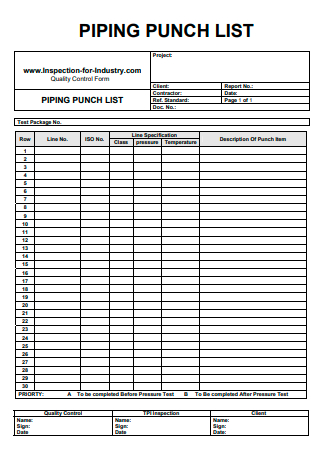
Piping Punch List
download now -
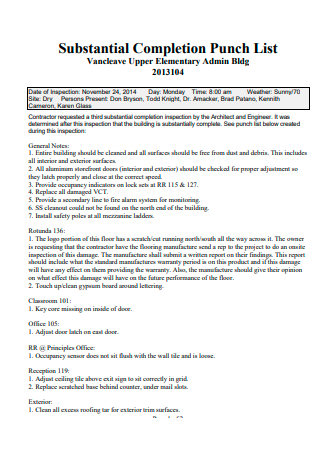
Substantial Completion Punch List
download now -
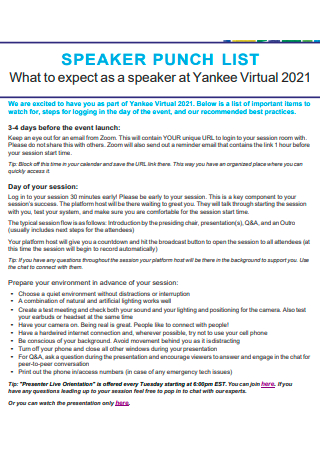
Speaker Punch List
download now -
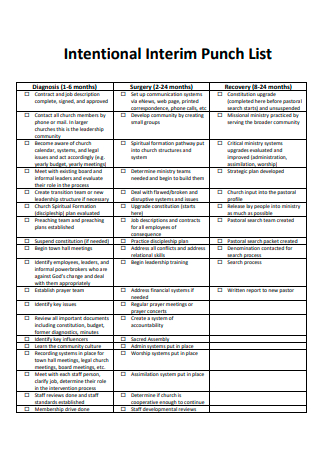
Intentional Interim Punch List
download now -
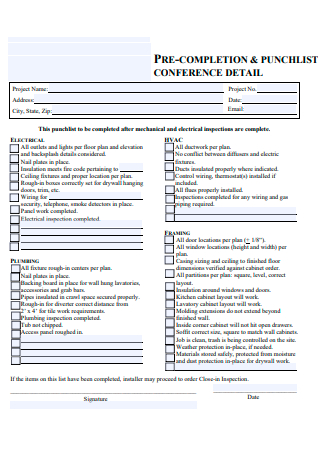
Pre-Completion and Punch List
download now -
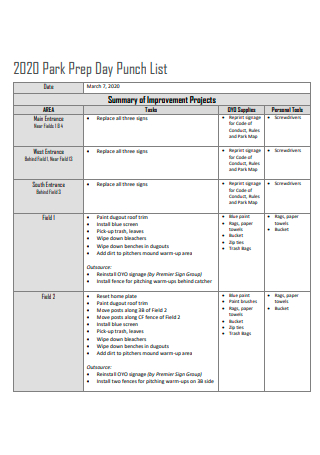
Park Day Punch List
download now -
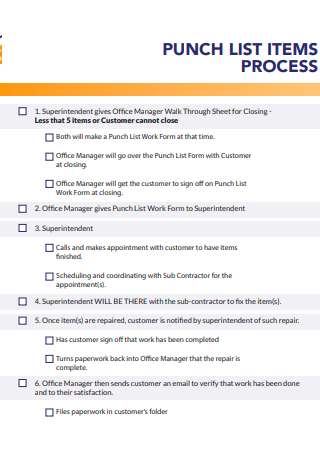
Punch List Items Process
download now -

Water District Punch List
download now
What Is a Punch List?
In the field of construction, a punch list is often relevant when there are still a few minor jobs to finish before a project ends. This document enlists the various tasks left to achieve until a construction project will eventually be complete. More so, punch lists denote the set of tasks that do not follow the original contract and agreement specifications. And a punch list is often attached to a substantial completion certificate.
According to Fieldwire, the two most common types of punch lists are the rolling punch list and the zero punch list.
Why Is a Punch List Important?
In dealing with construction work, it is definitely important for every engineer, contractor, architect, and project manager to follow the construction agreement or contract. But it can’t be helped that changes during the construction process are possible as they are unexpected. So why are punch lists important when they somehow add more workload to the project? Here are the top reasons that prove how important punch lists are:
To Prevent Longer Project Turnover
Changes, especially last-minute changes, in construction can make deadlines and workloads more challenging. So it only makes sense to use an organized list such as a punch list to manage these changes seamlessly. That way, you don’t have to expect a longer project turnover and errors can be lessened. By listing the set of last-minute tasks to accomplish, they can be done according to the work schedule set. Hence, deadlines won’t be missed.
To Conform with Contract Specifications
Bear in mind that a construction management plan can certainly depend on a punch list as a conduit to ensure that the contract terms are met. So when a job site is nearly complete, you need the punch list as the criteria if contract specifications conform exactly as planned. Because if any change did not meet the contract, clients and stakeholders would complain. So be sure to review the contract regularly before implementing changes enlisted in the punch list.
To Communicate Efficiently
A construction punch list is also a reliable tool for your construction team’s communication plan. So if there is any milestone reached or an ongoing issue in a construction project, it can be communicated between the contractor and the owner smoothly. In fact, a punch list helps you delegate tasks such as assigning a role for each party within the expected timeline. And all parties involved in the project must agree with each other to implement the tasks laid out in the punch list. Therefore, misinformation and perplexing matters will be mitigated for these projects.
To Finish Effectively
Always remember that the building process in construction is not the only factor to consider. It is important for the finished product to pay off as well. And punch lists help your construction work to finish effectively since they work as communication channels, progress tracking reports, crisis management plans, and other purposes. Also, the whole team behind the construction project would be flexible enough to accept late changes when a detailed punch list outlines the said tasks clearly.
To Cover a Range of Topics and Purposes
Saying that a punch list helps a construction project sounds too broad. So you can expect an extensive range of topics and functions for what examples concern punch lists. Whether you deal with a new home interior design, residential house renovation, new construction maintenance, electrical and plumbing construction, kitchen remodel, bathroom installation, apartment building architecture, or HVAC inspection, punch lists play a role in the process.
What Are the Basic Parts of a Punch List?
Now that you have insights into what a punch list means and why it is important, it is time to familiarize the many components of a standard punch list. Remember that components of a punch list are responsible for making the punch list effective in the first place. Without further ado, here are the main parts of a punch list:
How to Make an Effortless Punch List
Punch lists don’t need to be complicated, especially when adding new complex tasks to a construction project itself is daunting already. Instead, make an effort to create a punch list that is easy to use, straightforward, and wholesome. And these are the steps that will guide you in forming an effective punch list:
Step 1: Download a Sample Punch List
The easiest way for you to craft a punch list within minutes is to use sample punch list templates that are available for free, as seen above this article. First things first, figure out why you need the punch list until you can select a sample that fits according to your purpose. The best part is you can still customize the sample punch lists so you need not stick to the standard format, layout, or content. Optimize a sample punch list template now!
Step 2: Insert and Label the Punch List’s Parts
The next concern is to begin adding the basic parts of a punch list. As discussed earlier, the punch list requires the title, project information, punch number, down to the notes. These factors will complete your list in the first place. Also, you can add more elements to your punch list such as the statement of purpose, construction budget, and more. However, only relevant information should be there so unnecessary content won’t disturb those who depend on the punch list.
Step 3: Set Up Your Preferred Visual Organizer
It is already expected that punch lists follow how lists and checklists often look like. That means the document won’t only contain words but also graphic organizers. Visuals help arrange and organize the data such as using tables, bullet points, organizational charts, checkboxes, and other examples. So if you aren’t up to using the table, you can follow a visual organizer you prefer to be much easier.
Step 4: Produce the Document and Update the List Regularly
How would you want the format of your punch list to be? Indeed, the samples here are in PDF format but you can also print hard copies or send them as soft copies. Produce the document until the punch list will finally be used. However, the process doesn’t only end there. Be responsible to update the punch list from time to time. Every time there is an update about new tasks, task changes, and other leftover deliverables, log the information into the list immediately.
FAQs
What are other names of a punch list?
A punch list can be referred to as a punch out list, snag list, or deficiency list. And if you are wondering why is it called a punch list, it was named after how traditional people used to punch a hole after every to-do list item that has been completed.
What are the types of a punch list?
Fieldwire stated that there are multiple types of a punch list. The two most common ones are the rolling punch lists and zero punch lists. A rolling punch list is a log sheet of punch list items recorded in real-time. Meanwhile, a zero punch list signifies that no punch list was involved at the project completion time.
Whether you need to insert new tasks in a construction project or revisit old assignments that still need to be changed, make sure to adjust to these matters seamlessly using an excellent punch list. It should be safe to assume that construction work can have endless tasks but completing every single one of them is possible and doable if dedicated to an easy-to-follow document. And that is just what sample punch list templates can promise you to complete all the requirements of a project no matter what industry you belong to.

